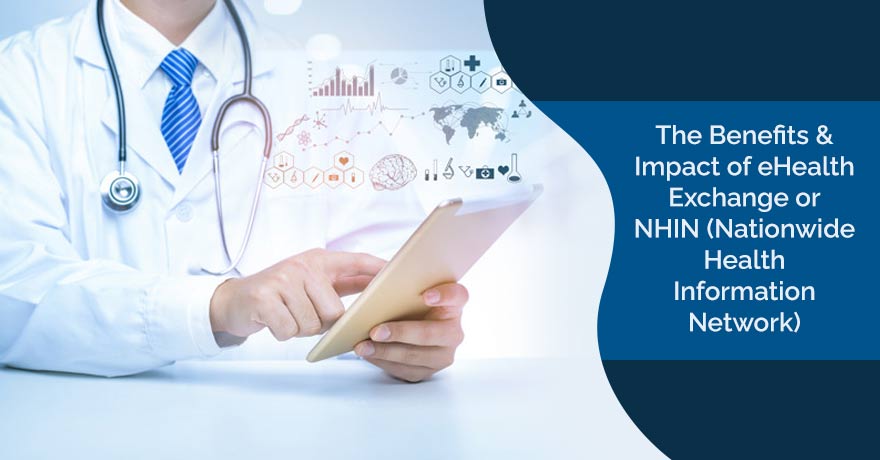The eHealth Exchange is an initiative for the sharing of health information. eHealth Exchange was earlier called the Nationwide Health Information Network (NHIN). It connects federal agencies and non-federal organizations and allows them to collaborate to enhance patients care and public health.
It promotes interoperability and benefits healthcare by expanding its reach to improve patients are decisions. It provides multi-purpose platforms that are capable of incorporating new standards.
eHealth Exchange allows exchanging health information electronically between organizations. For instance, it enabled the Indian Health Information Exchange to exchange and share with the Veterans Health Administration and the Social Security Administration.
Initially, it was developed under the help and support of the US Office of the National Coordinator for Health Information Technology and is now managed by the non-profit industry, Sequoia Project.
It is a rapidly growing exchange network and secures clinical information worldwide. It is extended in 50 states, four federal agencies, around 25,000 medical groups, and over 800 pharmacies. It is the most significant health exchange information structure in the US.
Several benefits are linked with eHealth Exchange. It cuts the expenses associated with legal agreements and custom interfaces for the participants. It helps in better decision making and also provides better patient information security.
What is the Impact of eHealth Exchange?
eHealth Exchange operates at the National level and connects health information networks and multiple healthcare organizations. Health IT infrastructure is a crucial element of the plan for achieving nationwide interoperability and learning health systems. In Washington, it is benefitting military personnel, who wants their patient records to follow them to changing locations.
MIN-NS CEO Mark Quenneville said,
“Time and again, it's been proven that when patient data is readily accessible by the clinician, at the point of care, then the clinician will be able to make better, more well-informed decisions for the patient.”
He added,
“As many of our service men and women are deployed around the globe these days. MIN-NS provides a bridge that enables the patient's care record to virtually follow any member of the armed forces, and contractors, from their home base to any deployed location around the globe."
Outside military services, eHealth Exchange, is also contributing to increasing privacy capabilities for those who are looking to protect EHR data and other health data exchange. These activities are a great example of Exchange’s process since its inception in 2006.
Within five years, the network grew over 20 participant organizations. Michael Mathews, CEO of The Sequoia Project President, said,
“In addition to seeing a spike in the number of participants, we’ve heard feedback from eHealth Exchange participants saying that the larger the network grows, the more value they’ve been able to get out of it. While it may be interesting to connect individual hospital systems with each other, it truly becomes compelling when we’re able to connect most care providers throughout the country – whether big or small, private sector or government."
According to the Sequoia Project, it sends information to several organizations, matches patients with data, and receives updates on health information.
Stakeholders Participating in the NwHIN are Divided into Four Broad Classes
It involves care delivery organizations and uses Electronic Health Records (EHR). Health Exchange Information (HIE) involves multi-stakeholder and allows the exchange of health-related data within the state and different groups.
In specialized participants, organizations that work for a specific purpose require only a subset of processes used by other participants. The majority of the users who use NwHIN are healthcare providers and healthcare consumers.
Healthcare Consumers might use features of a multi-regional PHR that will participate in NwHIN. Furthermore, they will not have access to a PHR and have limited functionalities. Healthcare providers may use EHR features to connect to an HIE and to support information exchange with EHRs.
eHealth Exchange Different Standards and Elements
It includes the definition of data elements and involves content to be connected and exchanged. Data Interchange Formats encodes data elements during the exchange of information and identifies the relationships between elements.
The architecture and standards with the eHealth Exchange enhance several features. The features include shared governance, a security model that allows access control, and common legal agreements.
Support for Innovation
First, when eHealth Exchange was formed, the government opted for an exchange approach and stopped creating a required gateway. The government favored the decentralized approach and supported further innovation.
Today, the scenario has changed. eHealth exchange remains the largest network and can now adopt a centralized network approach by sharing a common gateway for all participants. It is a step towards additional exchange methods.
Jay Nakashima, Executive Director of eHealth Exchange, said,
“Their unwavering commitment to query-based connectivity to improve patient care drove us from implementation kick-off to live, bi-directional exchange using the new eHealth Exchange technology in just four months.”
Concluding Words
Technology is booming in every sector. Be it medical, banking, or anything: technology is making everyone’s work easier. The requirements and complexities in the healthcare industry are different. The use of digital technologies in clinical settings follow different standards and regulate how health information will be stored and accessed. The NHIN officially became the eHealth Exchange in 2012. It provides a set of standards and policies.
The participating organizations share a common set of standards that allows the trusted and interoperable connection among the Exchange Organizations by requesting copies of the information from other organizations, matching patients to their data, and sending health information to different organizations. Furthermore, eHealth Exchange architecture decreases cost, complexity, and security risks.
